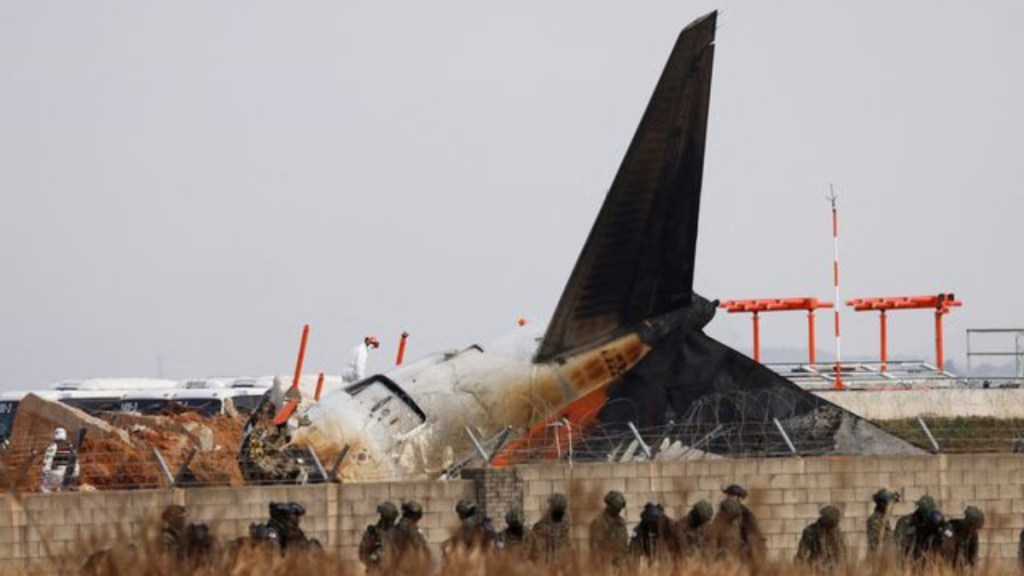South Korea Plane Crash: A Jeju Air Boeing 737-800, traveling from Bangkok to Muan Airport, crash-landed on Sunday with 181 people on board. According to recent reports, 179 lives were lost, and only two survivors were pulled from the wreckage. Videos shared by local news show the plane sliding along the runway without landing gear before crashing into a wall and exploding. Here’s what we know so far:
- A South Korean Transport Ministry official revealed at a press briefing on Monday that the pilot of Jeju Air flight 7C 2216 had reported a bird strike and declared a mayday shortly before the crash.
- In response to the tragedy, South Korea’s acting President Choi Sang-mok convened an emergency meeting on Sunday and declared a national mourning period until January 4. Sharing his sympathies in a post on X, Choi stated that the government would do everything possible to help recover the families from this accident and prevent such incidents in the future.
- The crash site at Muan International Airport has been designated as a special disaster zone to facilitate recovery and support efforts.
- Many firefighters, emergency responders, and military personnel were dispatched to the scene of the crash, as the acting president declared the site a special disaster zone.
- At Muan Airport, distraught families gathered on the first floor, many overcome with grief as they awaited news of their loved ones.
Before Sunday’s tragic crash landing, the deadliest plane crash on South Korean soil happened in 2002 on April 15. An Air China Boeing 767, en route from Beijing, struck a hill near Busan-Gimhae Airport, resulting in 129 fatalities. The most recent fatal incident involving a South Korean airline happened on July 6, 2013, at San Francisco Airport. An Asiana Airlines Boeing 777 crash-landed, killing three people and injuring 182.
The worst disaster involving a South Korean airline dates back to September 1, 1983. A Korean Air Boeing 747, flying from New York to Seoul via Alaska, was shot down by a Soviet fighter jet over the Sea of Japan. All 269 people on board, including 23 crew members and 246 passengers, lost their lives.
(With Agency Inputs)

